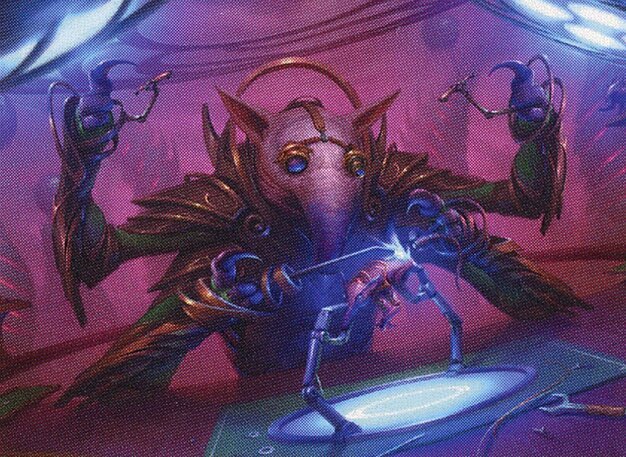Modern, in Magic: The Gathering, is a competitive play format that allows players to build decks using cards from all expansions released after the game's eighth basic edition, released in 2003.
With that, Modern offers a wide variety of strategies and archetypes, allowing players to create powerful and diverse decks. The format is known for its high-speed and explosive power, with games often being decided in a few turns. It is one of the most popular and played formats in Magic: The Gathering, with regular events being held in stores and large tournaments held all over the world.
With all this large contingent of cards available, it is obvious that some will stand out, while others will lose income. Even extremely viable cards in their respective Standard formats can prove weak against what dominates Modern, raising questions about how to use them and whether they will ever see play again.
In today's article, we'll talk about cards that are legal in Modern and, even thought they are too powerful in other eternal formats, don't show results in the format, even if there's no shortage of attempts.
Siege Rhino

This one brings back memories. I followed Tarkir's Standard very closely, as it was the one that turned over at the store closest to home, and Siege Rhino was the most destructive card in the format. Present in the Abzan Midrange, a tier 1 deck at the time, Rhino not only drained three life when it entered, but also put a huge creature with trample in play. It was a simple effect, but its statistics, the ability to recover life while the opponent lost and the ease of fetching land with the fetchlands that came out in the same set, allowed the card to perform excellently.
Unfortunately, that success didn't translate to other formats. In Modern, it is quite possible to put a Tarmogoyf almost as big as the Rhino on the battlefield on the second turn and without having to choose lands of different colors. The Goyf doesn't trample or drain life, but the advantage its body creates so early was able to redeem that difference in his arsenal.
We must also consider removals like Path to Exile that were running at the time and Fatal Push that came a few years later, and has the ability to deal with this huge threat with a minimal expenditure of mana.
Siege Rhino once saw a lot of play in Abzan Midrange in Modern, as an alternative to the Jund decks (who back then ran Huntmaster of the Fells, or other four-drops). However, it is one of these cards who were power crept out of the format after the first Modern Horizons came out.
Monastery Mentor

Speaking of Tarkir again, we have Monastery Mentor, a card that performs great in Legacy and is restricted in Vintage. These two formats are known for high speed coming from instants and low-cost artifacts that allow players to perform multiple actions in a single turn. These cards, often referred to as "cantrips", allow players to draw more cards, search their decks for other specific tools, and manipulate their hands more efficiently, generating extra mana and resources.
Thus, in Legacy and Vintage it is possible to get the monk into play much earlier, sometimes even in the first turn, and to develop your game with the Prowess and the creation of tokens with that same keyword, allowing reactive decks to take an aggressive role.
Unfortunately, Modern lacks so much interactivity with this card, having few to none options for free mana and worse cantrips, which makes the card slower to be cast and means that not every turn you can activate its abilities as much as necessary, undermining Monastery Mentor's game plan.
Delver of Secrets

Delver of Secrets is extremely popular in Legacy and Pauper. Being a cheap creature with a blue mana cost and a special ability that allows it to transform at the start of its controller's turn by revealing an instant or sorcery from the top of your deck. When this triggered ability succeeds, Delver of Secrets is transformed into a new creature called Insectile Aberration, which has flying and increased power and toughness. Thus, it is possible to make use of several of these creatures aggressively while using other spells to control the game and ensure that the creatures connect the necessary attacks.
In both Legacy and Pauper, we have great low-cost cards that allow us to tidy up the top of the deck, Brainstorm, Ponder and Preordain. All these are options that make it much easier to transform Delver.
Unfortunately, Modern lacks this option, with a maximum of Serum Visions available, thus making Delver lose many chances to transform, since he is totally dependent on luck, making the card lose reliability. With your Delver flipping far less than necessary in Modern, your deck's game plan goes out the window and the card loses a lot of shape.
That doesn't mean Delver didn't see play, though, but it only worked on Modern when things got out of hand: Treasure Cruise, released in Khans of Tarkir, took Delver to the top of the format alongside Monastery Swiftspear and Young Pyromancer due to the pressure all of these cards applied when you never ran out of gas.
Spellstutter Sprite

Here we have a card very well positioned in Pauper and that even saw a bit of play in Modern, but that lost its space. Spellstutter Sprite is a counterspell that needs other fae beings to increase its capabilities.
Back in the day, when Bitterblossom was the terror in control decks, the Sprite saw more play since the enchantment also counts as a fairie, making the blue creature's hit rate higher. The tokens would also help improve Spellstutter and practically turn it into a Counterspell with wings.
Nowadays, we have other good faeries, like Brazen Borrower, but the decline of Dimir Control with Bitterblossom and Vendilion Clique, alongside the Metagame's evolution, caused the card to lose the little situational use it had in the format.
However, it's still somewhat decent when the Metagame is filled with cheap spells.
Grim Flayer

Here we have another creature that was famous in Standard, but has a hard time in Modern. Grim Flayer acted in his Standard just like Tarmogoyf in Modern, a two-mana powerful threat.
Unfortunately, Goyf himself put the Flayer in check. The first grew with both graveyards, the Grim Flayer only with the player's own. Goyf manages to boost even more, Flayer is stuck at 4/4 stats. And in an eventual battle between the two with his power at 4, Tarmogoyf would always win, since it has a higher toughness. Also, Flayer needs two color-specific mana.
The card also suffered from Lightning Bolt when smaller and Fatal Push, an extremely popular removal from the format, regardless of its size.
However, Grim Flayer does have its trump cards. In addition to being able to trample, which is great when you have 4 power, it can also generate an advantage for its controller in the form of a juicy surveil 3.
Phyrexian Obliterator

This is undoubtedly the card that has the most people bothering trying to make it work. Every time Phyrexian Obliterator is quoted or reprinted, its fervent legions of fans show up trying to force it into some specific Modern deck.
Its ability to convert damage into a deficit of permanents for the opponent is good and can end games easily. But still, the vast majority of removals present in the format manage to get rid of this creature without triggering its effect. And as a last resort, just letting it attack or blocking it with small creatures also helps.
As great as its ability is, its four black mana cost makes it tricky in two-color decks and prohibitive in any deck with three or more. It can be easily bypassed on the board, and decks in greater control can easily get rid of it. This is the card that Modern has been trying to make happen for the longest time, and always unsuccessfully.
Winota, Joiner of Forces

Winota, Joiner of Forces has always been heavily rumored in Modern, due to her huge impact on Pioneer and Historic. However, her ability to bring in a strong turn falls flat in the presence of Solitude or Fury under most current decks, which can cripple your human before you're even able to do anything with her.
Also, Winota decks start to happen around turn three or four, depending on how fast you get her on the board, and by then other decks like Colossus Hammer, Indomitable Creativity or even Living End are much further along the way and have likely dealt with your threats. And on top of that, it often behaves like a card that's just there to give the game a little extra, with few high-cost human drops that really make a serious impact.
As much as Winota, Joiner of Forces was a huge threat in Pioneer, and she had everything to do better with a larger pool of creatures in Modern, with the format also comes a large list of new threats, which can completely waste the turn you cast her.
Conclusions
Modern really is an interesting format. Even some of the biggest threats from other game modes can fall apart when we start playing it.
Until the next time!














— 评论 0
, 反应 1
成为第一个发表评论的人